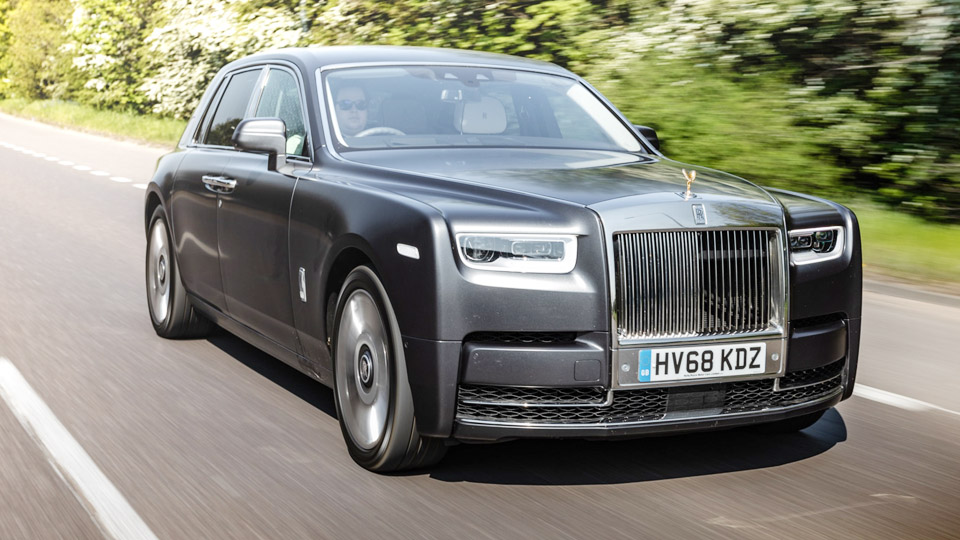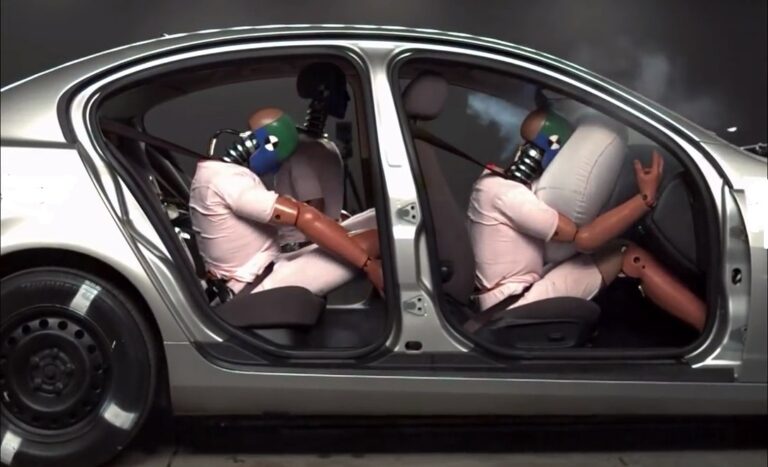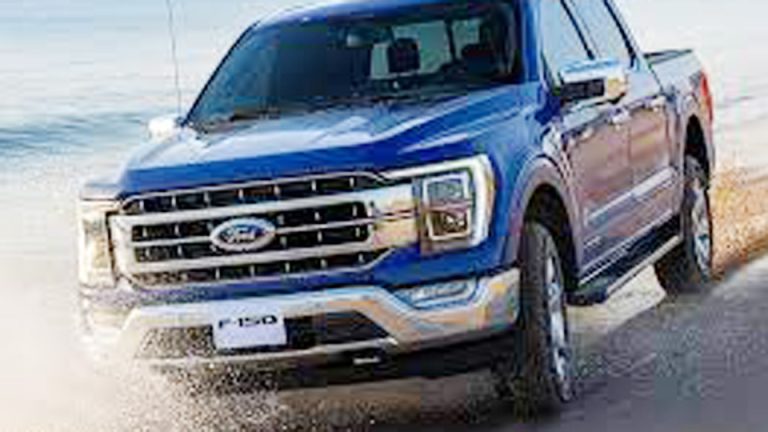I still remember the first time I got behind the wheel of a Rolls-Royce Phantom—it wasn’t just a drive, it was an experience that completely redefined what I thought a luxury car could be. As someone who’s spent years under hoods and tuning suspensions, I’ve seen what makes a vehicle special, but why was the Rolls-Royce Phantom such a dynamic automobile? It wasn’t just the handcrafted interior or the silent ride; it was the way everything worked together—effortlessly, precisely, and with purpose.
Most car owners think “luxury” means soft seats and shiny badges, but this machine blends power, engineering finesse, and advanced technology in a way few others do. Whether you’re a gearhead like me or just love quality rides, understanding what makes the Phantom so dynamic opens your eyes to the engineering magic behind true automotive excellence. Let’s dig into what really sets it apart—and why it still stands in a class of its own.

Image by bosshunting
Legacy of the Phantom Name
The Rolls-Royce Phantom isn’t just a car—it’s a legend that’s been turning heads since 1925. Named after “ghosts” or spirits, the Phantom has always been the pinnacle of Rolls-Royce’s lineup, embodying the brand’s pursuit of perfection. From its early days as a hand-built limousine to the modern Phantom VIII, it’s been the choice of royalty, celebrities, and the ultra-wealthy.
Why does this matter? The Phantom’s legacy sets it apart from other luxury cars. It’s not just a vehicle; it’s a statement of prestige and individuality. I remember seeing a Phantom VII at a car show in Chicago—its massive grille and sleek lines made every other car look ordinary. That kind of presence is why the Phantom has remained a cultural icon for a century.
Engineering Excellence Under the Hood
At the heart of the Phantom’s dynamism is its engineering, particularly its silky-smooth V12 engine. The modern Phantom VIII, launched in 2017, boasts a 6.75-liter twin-turbo V12 that pumps out 563 horsepower and 664 lb-ft of torque. But it’s not just raw power—it’s how that power is delivered. The engine is so refined you barely hear it, yet it propels this 5,600-pound beast from 0 to 60 mph in about 5.3 seconds.
The secret lies in Rolls-Royce’s obsession with smoothness. The V12 is paired with an eight-speed automatic transmission that shifts so seamlessly it feels like magic. I once rode in a friend’s Phantom Extended Wheelbase, and the acceleration was so effortless it felt like the car was floating. This is thanks to the “Architecture of Luxury,” an aluminum spaceframe that keeps the car rigid yet light, improving handling and ride quality.
Why It Matters: For drivers in the USA, where long highway stretches are common, the Phantom’s powertrain delivers a fatigue-free experience, whether you’re cruising through Nevada’s deserts or navigating New York’s stop-and-go traffic.
| Engine Specs | Details |
|---|---|
| Type | 6.75L Twin-Turbo V12 |
| Horsepower | 563 hp |
| Torque | 664 lb-ft |
| 0–60 mph | ~5.3 seconds |
| Top Speed | 155 mph (limited) |
Magic of the Ride Quality
The Phantom’s ride is often described as “wafting,” and that’s no exaggeration. Rolls-Royce engineers designed it to feel like you’re gliding on air, thanks to a sophisticated air suspension system and self-leveling technology. The car uses cameras to scan the road ahead, adjusting the suspension in real-time to smooth out bumps.
I’ve driven plenty of luxury cars, but nothing compares to the Phantom’s ability to erase potholes and uneven roads. On a trip through rural Pennsylvania, where roads can be rough, a Phantom VIII I rode in made it feel like we were floating over silk. This is critical for US drivers, where road conditions vary from smooth interstates to crumbling city streets.
Pro Tip: If you’re considering a used Phantom, check the air suspension for leaks—repairs can be pricey, often $2,000 or more per corner.
Unparalleled Craftsmanship in the Cabin
Step inside a Phantom, and you’re not just in a car—you’re in a work of art. The interior is a showcase of hand-crafted luxury, with acres of supple leather, hand-polished wood veneers, and custom artwork in the “Gallery” dashboard. Every detail, from the stitching to the Starlight Headliner’s fiber-optic “stars,” is meticulously crafted.
The Phantom’s rear cabin, especially in the Extended Wheelbase model, is where it shines. With 8.6 inches of extra legroom, it’s like a private jet on wheels. Features like massage seats, a refrigerated console, and rear entertainment screens make it a haven for passengers. I helped a buddy customize his Phantom’s interior, and we spent hours choosing leather colors and wood types—it felt like designing a bespoke suit.
Why It Matters: For US buyers, the Phantom’s customization options let you create a car that reflects your personality, whether you’re a Silicon Valley exec or a Texas oil baron.
| Interior Feature | Description | Why It’s Special |
|---|---|---|
| Starlight Headliner | Fiber-optic lights mimicking a starry sky | Customizable patterns, mesmerizing effect |
| The Gallery | Dashboard art panel | Can feature bespoke artwork or materials |
| Coach Doors | Rear-hinged doors | Elegant entry/exit, iconic design |
| Privacy Suite | Soundproof rear partition | Ultimate privacy for VIPs |
Customization That Defines You
No two Phantoms are alike, thanks to Rolls-Royce’s Bespoke program. Want a dashboard inspired by a Van Gogh painting? Done. Need a secret compartment for your watch collection? They’ll make it happen. The Phantom is the ultimate canvas for self-expression, with options like custom paint colors, embroidered headrests, and even gold-plated Spirit of Ecstasy ornaments.
I once saw a Phantom Scintilla at a concours event in California, with its ceramic two-tone paint and milled aluminum dashboard art. It was a rolling masterpiece, and the owner told me it took over a year to build. This level of personalization is why the Phantom appeals to those who want a car as unique as they are.
Real-World Example: A client I know in Miami commissioned a Phantom with a “Year of the Dragon” interior, complete with embroidered dragon motifs. It was a showstopper at local car meets, turning heads everywhere.
Advanced Technology for Modern Drivers
The Phantom isn’t stuck in the past—it’s packed with cutting-edge tech that enhances its dynamism. The infotainment system, hidden behind a glass panel, supports voice commands and seamless smartphone integration. Driver-assistance features like night vision, adaptive cruise control, and lane-departure warnings make it surprisingly practical for a car of its size.
The Phantom’s “Rolls-Royce Connected” feature links to the Whispers app, letting owners control settings remotely or communicate with their dealer. I tested this on a friend’s Phantom, and it was wild to adjust the climate control from my phone while standing outside the car. For US drivers, this tech is a boon on long road trips or in urban jungles like Los Angeles.
Warning: The tech is complex, so ensure your local dealer has trained technicians. A software glitch can mean a day at the shop, and repairs aren’t cheap.
Handling and Driving Dynamics
You might think a 19-foot-long sedan handles like a yacht, but the Phantom surprises with its agility. The rear-wheel-drive setup and precise steering make it feel lighter than it is. The air suspension and four-wheel steering (on newer models) let it glide through corners with grace, whether you’re navigating tight city streets or winding coastal roads like California’s Highway 1.
I drove a Phantom VIII briefly at a dealer event, and despite its size, it felt nimble. The steering was light yet responsive, and the brakes had a reassuring bite. For a car this luxurious, it’s shockingly fun to drive, though most owners prefer to be chauffeured.
Why It Matters: In the USA, where driving styles range from relaxed cruising to spirited backroad runs, the Phantom’s balance of comfort and control is a rare treat.
Maintenance Tips for Phantom Owners
Owning a Phantom is a commitment, but with proper care, it’s a joy. Here’s how I’d keep one in top shape, based on my experience with high-end cars.
Step 1: Regular Cleaning
Wash the exterior weekly to protect the paint, especially in salty coastal areas like Florida. Use a pH-neutral car shampoo and microfiber mitts to avoid scratches. For the interior, vacuum leather weekly and condition it monthly with a product like Lexol.
Step 2: Tire Care
The Phantom’s massive tires (often 22 inches) are pricey—$1,200 each or more. Check pressure monthly (around 35 psi, per the owner’s manual) and rotate every 6,000 miles. Avoid potholes, as sidewall damage is common and costly.
Real-World Tip: I know a Phantom owner who blew a tire on a Chicago pothole. He had to special-order a replacement, which took two weeks. Keep a tire repair kit handy for emergencies.
Step 3: Fluid Checks
Check oil and coolant levels every 1,000 miles. The V12 is robust but sensitive to low fluids. Use only Rolls-Royce-approved oils (usually 0W-20 synthetic) to avoid engine wear.
Step 4: Battery Maintenance
The Phantom’s electronics are power-hungry. If you store it for weeks, use a trickle charger to keep the battery at full capacity. Disconnect the negative terminal for long-term storage to prevent drain.
Step 5: Annual Inspections
Take it to a certified Rolls-Royce dealer annually for a full diagnostic. The complex suspension and electronics need expert attention. Budget $1,500–$3,000 for routine service.
| Maintenance Task | Frequency | Cost Estimate | Tools Needed |
|---|---|---|---|
| Exterior Wash | Weekly | $20–$50 | Shampoo, microfiber mitts |
| Tire Rotation | Every 6,000 miles | $100–$200 | Jack, torque wrench |
| Fluid Checks | Every 1,000 miles | $0–$50 | Dipstick, flashlight |
| Battery Maintenance | Monthly (if stored) | $100 (charger) | Trickle charger |
| Dealer Service | Annually | $1,500–$3,000 | None |
Warning: Don’t skimp on maintenance. A neglected Phantom can rack up repair bills in the tens of thousands—think $10,000 for a suspension overhaul.
Pros and Cons of the Phantom
| Pros | Cons |
|---|---|
| Unmatched luxury and comfort | High purchase price ($450,000+) |
| Powerful, smooth V12 engine | Expensive maintenance and parts |
| Endless customization options | Poor fuel economy (12–18 mpg) |
| Advanced tech and safety features | Large size can be unwieldy in cities |
| Iconic design and presence | Limited dealer network in rural areas |
Common Issues and Fixes
Even a Phantom isn’t perfect. Here are common issues I’ve seen and how to address them.
Air Suspension Failures
The air suspension can leak over time, causing the car to sag. Check for hissing sounds or uneven ride height. Repairs cost $2,000–$5,000 per corner at a dealer.
Electrical Glitches
The complex electronics can act up, especially with the infotainment or climate systems. A software update usually fixes it, but you’ll need a dealer’s diagnostic tools.
Paint and Chrome Wear
Coastal humidity or road salt can dull the chrome grille or peel paint. Regular washing and waxing prevent this. For chrome, use a dedicated polish like Flitz.
Real-World Example: A friend’s Phantom had a glitchy rear screen that kept freezing. A dealer reset the system in an hour, but it cost $500. Always test electronics before long trips.
Why the Phantom Excels in US Conditions
The Phantom is built for the diverse driving conditions of the USA. Its long wheelbase and smooth ride make it ideal for cross-country trips, like driving Route 66. The powerful V12 handles high-altitude passes in Colorado with ease, while the climate control keeps you cool in Arizona’s heat or warm in Minnesota’s winters. The spacious cabin is perfect for road trips, with room for luggage and creature comforts.
For city dwellers in places like Miami or Seattle, the Phantom’s presence turns heads, but its size requires careful parking. In rural areas, the night vision and adaptive cruise control shine on dark, winding roads.
Common Mistakes to Avoid
Skipping Regular Maintenance: Neglecting oil changes or inspections can lead to catastrophic engine or suspension issues.
Using Non-Approved Parts: Aftermarket parts can void warranties and cause problems. Stick to OEM components.
Ignoring Tire Wear: Worn tires compromise handling and safety. Replace them at 5/32-inch tread depth.
Overloading the Cabin: The Phantom’s luxury features are heavy—don’t add excessive weight with cargo, as it strains the suspension.
Conclusion
The Rolls-Royce Phantom’s status as a dynamic automobile comes from its unmatched blend of power, luxury, and craftsmanship. Its V12 engine delivers effortless performance, the ride quality smooths out the roughest roads, and the bespoke interior makes every journey a masterpiece.
For US drivers, it’s a car that conquers long highways, urban streets, and everything in between with unmatched poise. Whether you’re a collector, a DIY enthusiast, or just dreaming of owning one, the Phantom is a reminder that cars can be more than transportation—they can be art.
Pro Tip: If you’re eyeing a used Phantom, get a pre-purchase inspection from a Rolls-Royce dealer. It could save you from a $20,000 surprise repair bill.
FAQ
Why is the Rolls-Royce Phantom so expensive?
The Phantom’s price reflects its hand-built construction, bespoke customization, and premium materials like hand-stitched leather and rare wood veneers. It’s a bespoke masterpiece, not a mass-produced car.
How often should I service a Phantom?
Service it annually or every 10,000 miles at a certified Rolls-Royce dealer. Routine maintenance includes oil changes, fluid checks, and suspension inspections to keep it running smoothly.
Is the Phantom good for daily driving?
Yes, but its size and fuel economy (12–18 mpg) make it better for special occasions or long trips. Parking in tight US cities can be tricky, so plan accordingly.
Can I upgrade an older Phantom with new tech?
Some upgrades, like LED headlights or infotainment retrofits, are possible but costly ($5,000–$15,000). Consult a Rolls-Royce dealer to ensure compatibility.
What’s the difference between the Phantom and Phantom Extended?
The Extended Wheelbase model adds 8.6 inches of rear legroom, ideal for chauffeured passengers. It’s slightly heavier but retains the same performance and features.




